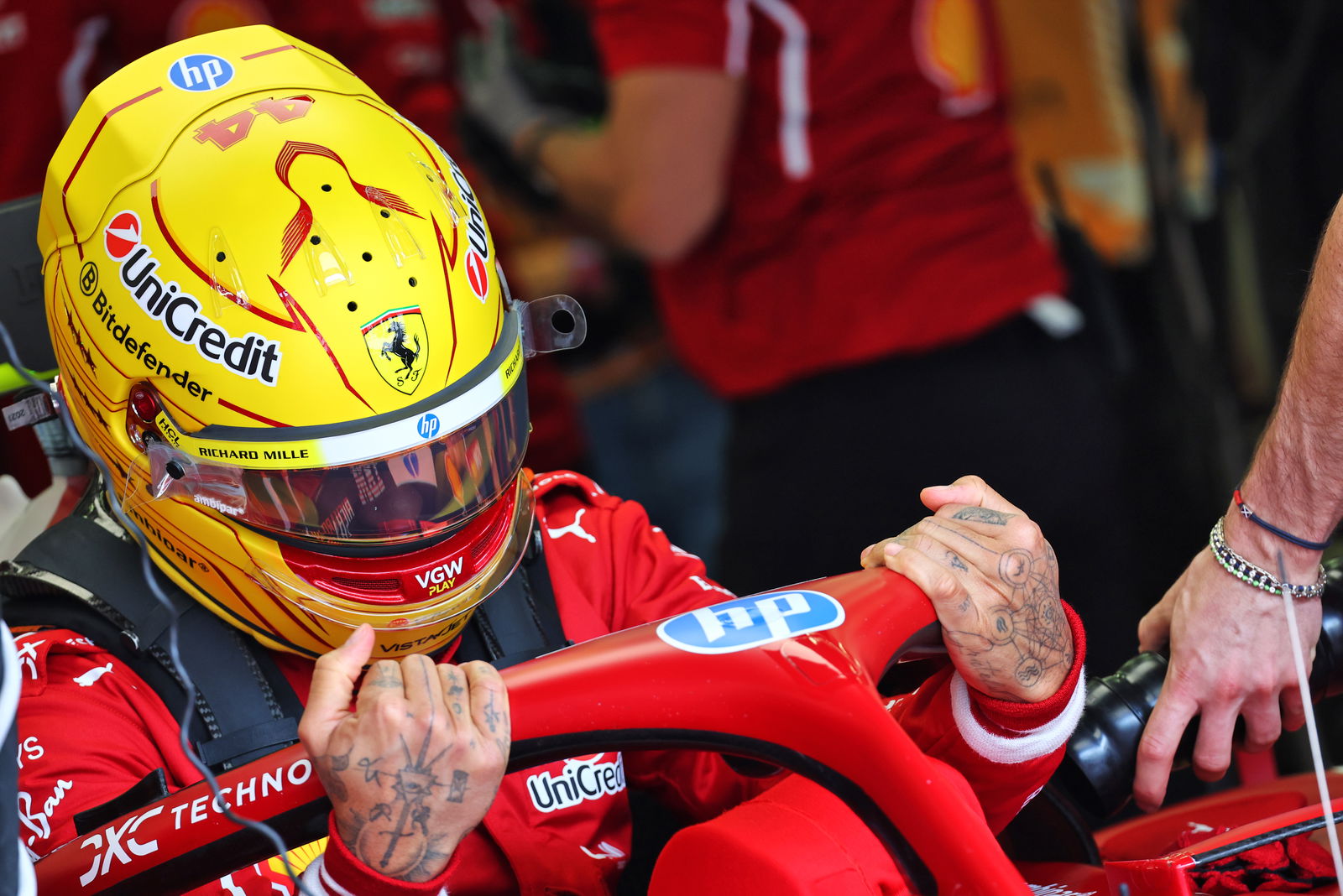Analysis: Which F1 team has made the biggest improvement in 2025?
Who is the biggest gainer in the early part of the year and who has slipped backwards? We crunch the numbers.

With the first five races of the 2025 Formula 1 season now complete, it’s a good time to analyse the performance of each team and compare the findings with their results in 2024.
Although the European leg of the campaign is yet to kick off, teams have already raced at a wide variety of tracks in Asia-Pacific this year, thus providing a strong indication of their overall speed.
Moreover, F1 raced on the same five circuits at the start of 2025 as it did last year, with only the order of the races having been shuffled over the winter. Of course, the change in dates meant the weather was noticeably different at some venues, particularly in Bahrain, but all teams still faced the same conditions as their rivals.
To find out who has made the biggest leap compared to last season, we first examined the one-lap pace of each team in qualifying. For this purpose, only the fastest driver of each team in the respective session was used during calculations.
Qualifying pace: Year on year improvement in seconds
| Team | Australia | China | Japan | Bahrain | Saudi Arabia | Average |
|---|---|---|---|---|---|---|
| Alpine | 2.002 | 3.231 | 1.994 | 0.577 | 1.108 | 1.782 |
| Williams | 1.43 | 3.535 | 2.099 | -0.459 | 0.871 | 1.495 |
| McLaren | 1.219 | 3.524 | 1.494 | -0.227 | 0.785 | 1.359 |
| Mercedes | 1.178 | 3.71 | 1.448 | -0.524 | 0.909 | 1.344 |
| Racing Bulls | 1.118 | 3.855 | 1.844 | -1.142 | 0.356 | 1.206 |
| Ferrari | 0.68 | 3.362 | 1.383 | -0.768 | 0.121 | 0.955 |
| Sauber | 0.761 | 3.033 | 1.023 | -1.43 | 0.397 | 0.756 |
| Red Bull | 0.434 | 2.843 | 1.214 | -1.244 | 0.178 | 0.685 |
| Haas | 0.28 | 2.979 | 1.627 | -1.871 | 0.372 | 0.677 |
| Aston Martin | 1.099 | 2.46 | 0.789 | -2.344 | -0.457 | 0.309 |
Lap times at Suzuka and Shanghai were significantly quicker this year due to resurfacing, but again some teams managed to find more pace than others.
Across the five qualifying sessions of 2025, Alpine showed the biggest improvement of all teams, with the A525 1.78s quicker than its predecessor on average compared to last year.
However, this data is skewed by the Renault brand’s dismal start to the 2024 season, which saw the team getting eliminated in Q1 for the first three races in succession. Alpine was a regular Q3 challenger at the end of last year, so these numbers aren’t just reflective of the progress it made over the winter break, but over the entire 12-month period.
Williams also got off to a tough start in 2024, but things couldn’t be more different this year. Alex Albon has been in top form so far, while the arrival of Carlos Sainz from Ferrari has boosted its prospects. Together, they have helped Williams deliver a 1.5s improvement in lap time in the last 12 months.
McLaren and Mercedes have also made significant strides, which is impressive given they were already front-running teams this time last year. Admittedly, both McLaren and Mercedes significantly trailed Red Bull until after the Miami GP in 2024, but the two teams have managed to extract even more pace from their cars in the final year of the regulations cycle.
Red Bull’s decline in form is evident from its results in the early part of the year. While it found nearly seven-tenths over these 12 months, its progress has been dwarfed by the improvements made by rival teams.
Unsurprisingly, Aston Martin has made the smallest gains of any team compared to last season. In fact, Fernando Alonso’s time in qualifying for this year’s Saudi Arabian GP was almost half a second slower than the lap with which he secured a second-row start in Jeddah last year.
To further evaluate the performance of each team, we also compared their fastest lap from each race in 2025 and 2024.
Race pace improvement (2025 vs 2024)
| Team | China | Japan | Bahrain | Saudi Arabia | Average Race Pace |
| Racing Bulls | 5.126 | 5.025 | -1.789 | 0.325 | 2.171 |
| McLaren | 3.297 | 3.763 | -0.664 | 0.166 | 1.630 |
| Williams | 4.536 | 3.794 | -2.219 | -0.159 | 1.488 |
| Mercedes | 4.296 | 2.987 | -0.796 | -0.65 | 1.459 |
| Alpine | 2.774 | 4.412 | -1.726 | 0.331 | 1.447 |
| Haas | 5.075 | 3.358 | -2.264 | -0.9 | 1.317 |
| Ferrari | 4.315 | 2.435 | -2.042 | -0.56 | 1.037 |
| Sauber | 2.759 | 4.574 | -1.88 | -1.238 | 1.053 |
| Aston Martin | 1.766 | 2.956 | -3.707 | -0.358 | 0.164 |
| Red Bull | 2.918 | 2.665 | -3.559 | -0.507 | -0.620 |
Australian GP has been omitted from this comparison as this year’s event was affected by rain, so only the fastest race laps from China, Japan, Bahrain and Saudi Arabia have been taken into consideration.
It’s important to note that F1 used to award a bonus point for the fastest lap until last year, which gave teams an incentive to make a late pitstop when the fuel was close to zero. Several other factors, including tyre wear, shouldn't be forgotten either.
Using the fastest race lap for comparison, Racing Bulls made the biggest improvement over 2024, gaining nearly two seconds in the last 12 months. McLaren also found a significant chunk of time, which has yielded four victories in five races so far.
Williams and Mercedes have also made significant progress, while Ferrari’s gains have been more muted compared to its direct rivals.
Interestingly, data shows that Red Bull has actually gone backwards compared to last year, with the RB21 six-tenths slower on average compared to its predecessor. Of course, Max Verstappen had the advantage of running in clear air in a dominant period of Red Bull at the start of the 2024 season, but the comparison nonetheless makes for a grim reading for the energy drinks giant.


